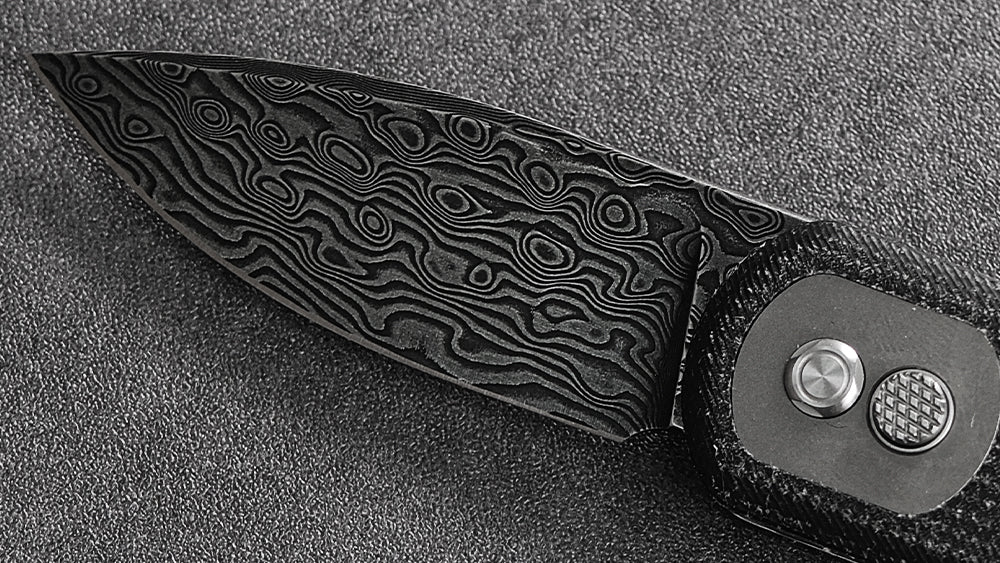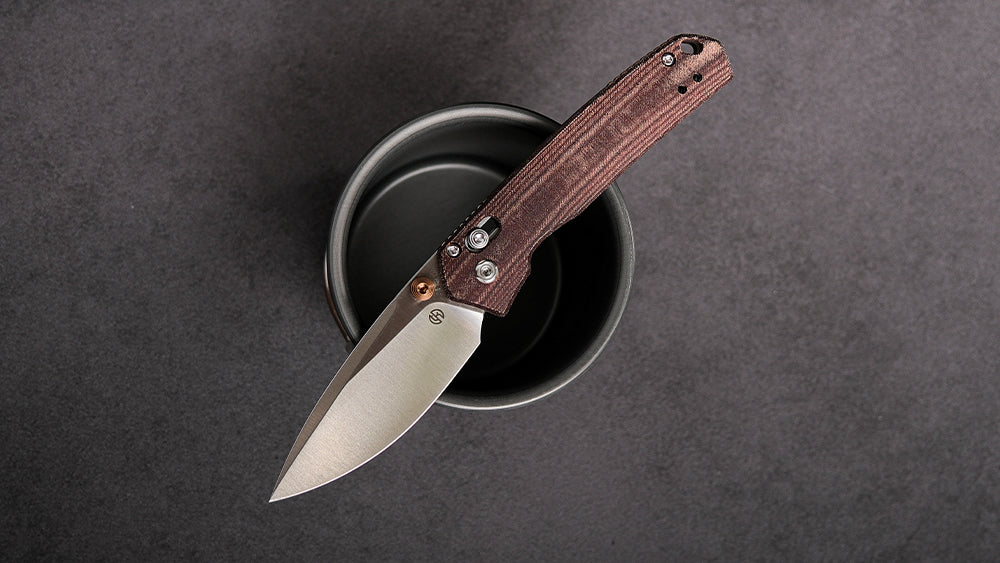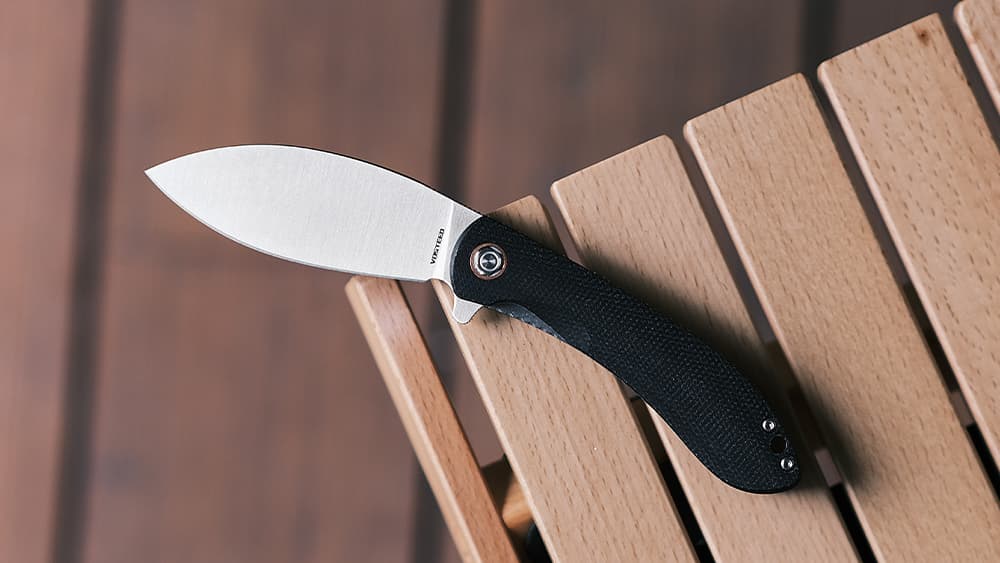A Damascus knife gets attention with its pretty, flowing patterns. These blades are not just tools; they are art that works. The history of Damascus steel is famous, connected to old swords of great strength. Modern pattern-welded steel has a similar look. A buyer needs to know some things to shop well. This guide gives five important points for anyone thinking about a Damascus knife. It helps you look past the beauty and pick a tool that works very well.

The Steel: The Damascus Core is King
The name "Damascus" tells you how a blade looks, not what it is made of. How well a damascus knife works comes from the steels used to make it. A buyer will find two main ways they are made. The first way is a blade with a solid, high-performance steel core. Then, layers of patterned steel are joined to the sides. This is often called a clad or San-Mai construction. The middle core does all the cutting. The Damascus layers look good and add some toughness. A common core steel is VG-10, a Japanese stainless steel known for staying sharp and resisting rust.
The second way is a blade made completely from many layers of different steels. The pattern goes all the way to the cutting edge. A popular mix for this method is 1095 high-carbon steel and 15N20 steel. 1095 steel is known for holding a very sharp edge because it has a lot of carbon. Its partner, 15N20, has nickel. The nickel resists acid, and this makes the bright, silver layers in the final pattern. The nickel also adds toughness to the mixed blade. The quality of the final blade, no matter how it's made, depends a lot on the heat treatment. A good heat treatment brings out the best in the steels. It sets the blade's final hardness and how long it lasts.
Analyze the Damascus Pattern: More Than Just a Pretty Face
The nice patterns on a damascus knife come from the maker's skill. Different methods make different looks. A "Random" pattern is the most basic. It is made from simple folding and forge-welding, and this makes natural, wavy lines. A "Twist" pattern is made when the maker twists the layered block of steel before making it flat. This creates pretty starbursts in the metal. The "Ladder" pattern is made when grooves are pressed or ground into the block, and then it is made flat. This action shows the layers in a set of parallel "rungs". Also, a "Raindrop" pattern uses round dents to make the look of circles inside circles on the blade's surface.

For a long time, people thought these patterns were just for looks. Some ideas said that the layers of hard and soft steel could make tiny teeth, helping to slice. Modern research gives a clear answer. Most patterns are just for looks, but some complex designs like the Ladder pattern can offer a real improvement in how it works. The shape of a Ladder pattern makes the steel layers cross the cutting edge at an angle, not parallel to it. Tests have shown this setup improves how long the slicing edge stays sharp. So, choosing a complex pattern might offer more than just looks; it can work better.
Consider the Knife's Purpose: Kitchen, Hunting, or Everyday Carry?
The best damascus knife changes based on what it's for. There is no single best design; the best knife is the one that is right for the job.
For the kitchen, a knife must be an exact tool. It needs to resist rust well to deal with acid in food and water. A thin blade with a hard edge (HRC 60 or higher) is very important for easy slicing and staying sharp for a long time. A clad construction with a VG-10 or AUS-10 stainless steel core is often a great choice for chefs.
A damascus fixed blade knife for hunting needs a different idea. Toughness is most important. The blade must not chip or break when cutting through hide, or even light bone. A full-tang design, where the steel runs the whole length of the handle, is needed for strength. Tough carbon steels like a 1095 and 15N20 mix are good for this job.
A damascus edc knife (everyday carry) needs to be good for many things. A damascus pocket knife or damascus folding knife must balance staying sharp, being tough, and being easy to carry. A safe lock is also most important for safety. The Corgi® Pup - Trek Lock Knife is a great example of a well-made damascus edc knife. Its 2.37-inch Damascus blade is a good size for daily tasks. The modified drop point style is good for many things, and a hardness of HRC 60±2 shows a good heat treatment for staying sharp. Its small size and low weight of 2.87 oz help make it easy to carry. The Trek Lock gives a good and safe lock, a very important feature for any folding knife.
Don't Forget the Handle: Damascus Ergonomics and Balance
The handle is how the user connects with the blade. A comfortable, good grip is important for safety and good work. A good design for your hand fits your hand's shape. This stops it from feeling bad during long use. The knife's balance point is also part of its design. A well-balanced knife feels easy to move and makes your wrist less tired. The choice of handle material changes the grip, how long it lasts, and care.
Micarta is a high-quality mixed material made from layers of fabric and resin. It is very strong, lightweight, and gives a great grip, even when wet. Wood is a common choice. It offers a warm and nice feel with pretty grain patterns. Wood handles can be damaged by water, so stabilized wood, which has resin put in it, is a better choice. Bone is another old material, liked for its country look, but it can have small holes and can crack if not taken care of.
The handle of the Corgi® Pup knife is a great example of a design for your hand. It uses black Micarta, a very good material known for its great grip and long life. The words "sleek, rounded design" that offers "excellent ergonomics, no hot spots" show a handle made for comfort and control. A design like this lets you use it with confidence in different situations. This is exactly what a damascus folding knife for everyday carry needs.

Set a Realistic Budget: You Get What You Pay For
The price of a damascus knife shows the materials, how hard it was to make, and the skill used. A handmade knife from a skilled maker can take many hours to finish, so the price will be high. The quality of the steel and handle materials is also a big part of the final cost. More complex patterns with more layers need more work, and this makes the price higher.
A buyer must also learn to spot fakes. Some cheap knives are not real pattern-welded Damascus. They are single pieces of steel with a pattern scratched or printed on top. A real damascus knife will show the layers all the way through the blade. You can often see the lines on the back edge of the knife.
Summary
Choosing the right Damascus knife is a good process. Look at the steel first, because it decides how well it works. Look at the pattern because it's pretty, and remember that some patterns might work better. Match the knife to its main job, if it is for the kitchen, the field, or your pocket. Also think about the handle's comfort and material. Last, have a good budget that matches the skill level you want. If you choose carefully, you will get a tool that works well and looks good for a long time.





Leave a comment
All comments are moderated before being published.
This site is protected by hCaptcha and the hCaptcha Privacy Policy and Terms of Service apply.